The 'concrete washing machine' estate where Manchester's homeless wound up
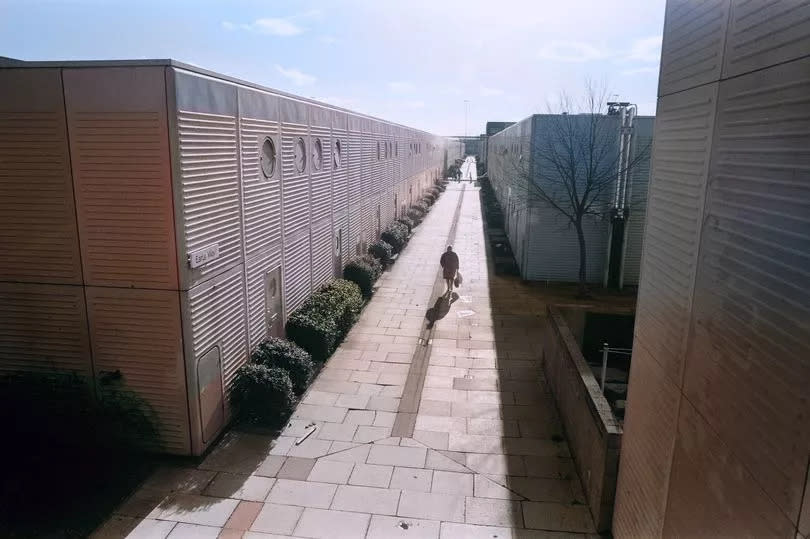
For the families uprooted from their close-knit terraced streets of inner-city Manchester, it must have felt like walking into the future. With its 'washing machine' porthole windows, lurid plastic walls and walkways in the sky, the Southgate estate was unlike anything the north west had seen before.
The Southgate estate was dreamt up as a radical solution to the slum clearances in Manchester and Liverpool, and was one of the final grand experiments in 20th century social housing. However, it stood for only 15 years before being flattened.
In the 1950s and '60s, the slum clearances in Manchester and Liverpool led to the creation of 'new towns' and 'overspill estates'. Many displaced Mancunians were relocated to tower blocks and council estates such as Wythenshawe, Langley in Middleton or Darn Hill in Heywood, while others ended up in Southgate, in the Cheshire new town of Runcorn.
READ MORE: 'It's a very special place': The end of Owens Park Tower
Designed by the esteemed modernist architect Sir James Stirling, the estate drew inspiration from the grand Georgian terraces of Bath and Edinburgh. Housing a population of 6,000 people in 1,500 homes, it was first commissioned in 1967 but only completed a decade later, the Manchester Evening News reported back in 2020.
Join our WhatsApp Top Stories and, Breaking News group by clicking this link
The estate comprised flat-roofed terraced housing and deck-access apartment blocks, all interconnected by 'streets in the sky' walkways that bypassed the traffic and provided access to the nearby shopping centre, Runcorn Shopping City. The apartments were constructed from concrete panelling with vibrant plastic cladding in bold blue, yellow and orange, earning the estate the nickname 'Legoland'.
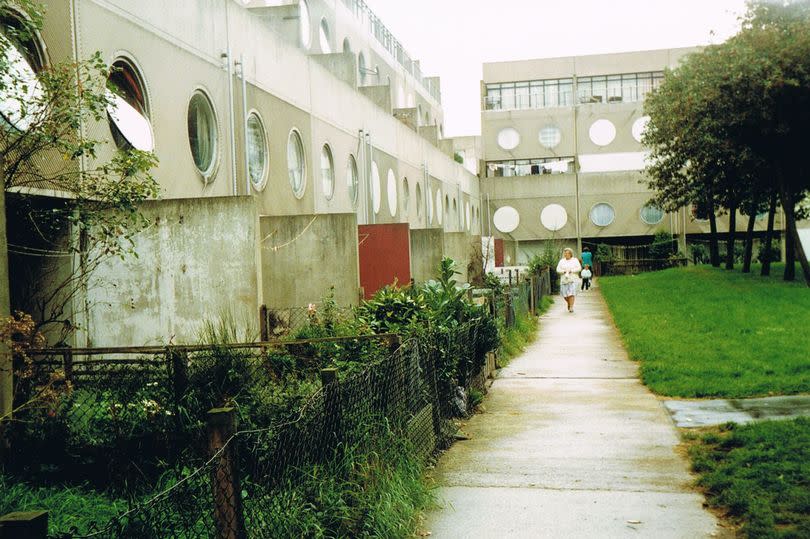
Mr Stirling, the architect behind the original plans for the Lowry arts centre at Salford Quays, revealed that the portholes, affectionately referred to as 'washing machines' by residents, drew inspiration from Liverpool's maritime heritage.
However, the estate quickly began to decline, with the deck-access apartments making surveillance challenging, leading to an increase in crime. Residents, who had been relocated from slums to new homes, soon began voicing complaints about anti-social behaviour, noise, and a host of other issues.

Moreover, the decision to install an oil-fired central heating system resulted in tenants being unable to afford to heat their homes following the oil crisis of the early 1970s. Residents also expressed dissatisfaction over the inability to personalise the exterior of their homes, the lack of private garden space for many, and the radical appearance of the development, which was vastly different from the traditional housing they had come from and available elsewhere in the region
Faced with a litany of problems, families began to vacate, leaving properties empty, and the estate earned a reputation as a 'dumping ground for undesirables'. By the mid-1980s, Southgate was in a state of disrepair.
Join our Greater Manchester history, memories and people Facebook group here.
A staggering £20m bill was quoted for its repair and maintenance over the next 15 years, leading the Warrington and Runcorn Development Corporation to decide in 1989 to completely demolish it.
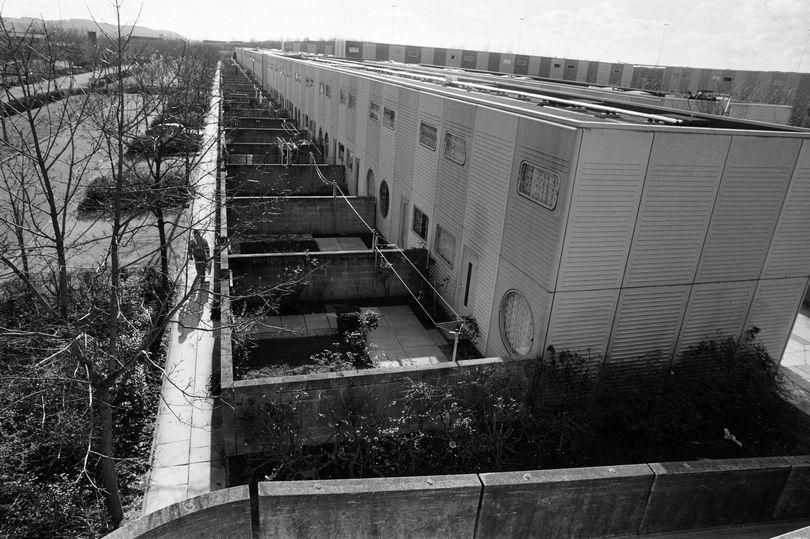
Demolition work on Southgate began in 1990 and, by 1994, the entire estate had been erased, later making way for a more traditional brick and tile suburban housing development. Despite its brief existence, the demolition of Southgate continues to spark discussion.
Love Greater Manchester's past? Sign up to our new nostalgia newsletter and never miss a thing.
An article from the Manchester-based Modernist magazine in 2011 lamented the loss of Southgate, stating it 'was a loss not just for Runcorn but for the entire second generation of new towns and to British architecture as a whole'.
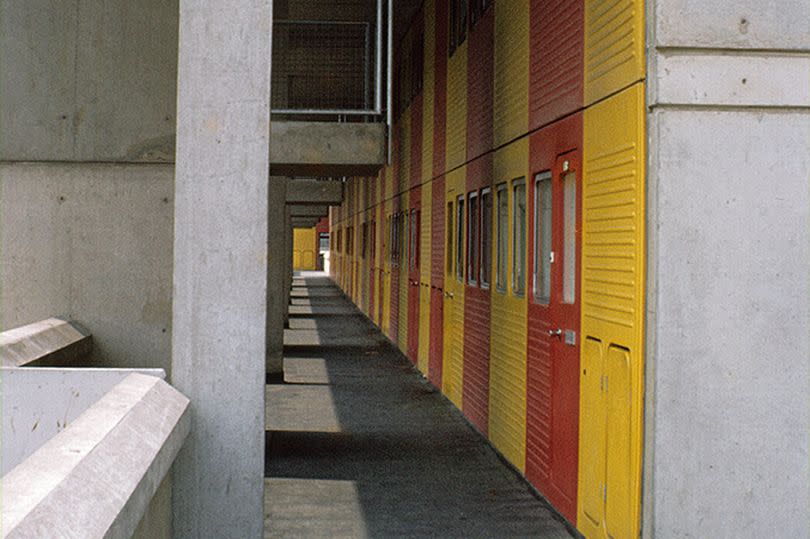
The publication highlighted that the estate was 'largely the victim of an original budget that was far too low to create sufficient quality for such a high-density scheme'. It further suggested that had Southgate endured, it would have become 'one of the major monuments to this significant period and a key site of architectural pilgrimage in northwest England'.
In a 2010 interview with Architect magazine, Michael Wilford, who partnered with Stirling on the project, did not shy away from their involvement, acknowledging they had accepted the challenge of working within the confines of a flawed low-cost housing system.
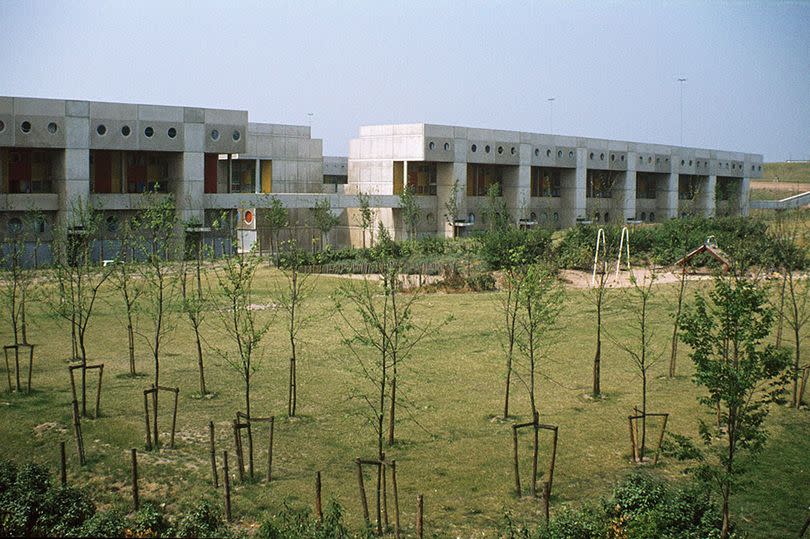
However, he branded the demolition a 'national scandal', remarking: "We only knew about it once the decision had been taken."
He also pointed out the financial implications for the public, saying: "As taxpayers, we are probably still paying for it." Wilford argued that "The cost of even radical alterations would have been nothing compared to demolition and replacement."
Does this story awaken any memories for you? Let us know in the comments section below.

 Yahoo News
Yahoo News 
